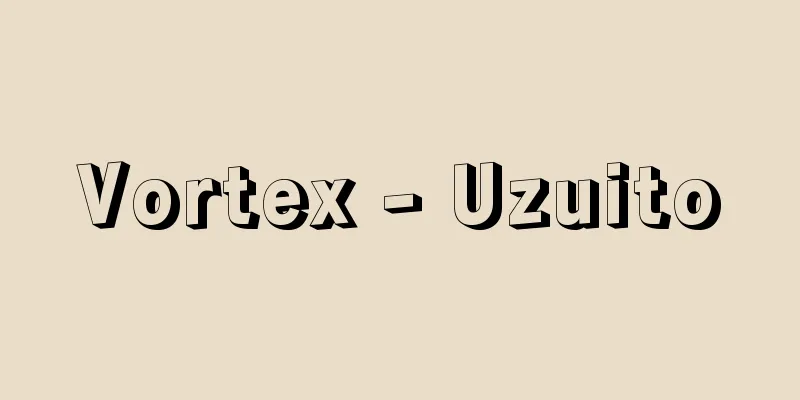Sofia - Sofia (English spelling)

|
The capital of Bulgaria. It is located in the Sofia Basin in the western part of the country, surrounded by the Stara Planina (Balkan) Mountains in the north and the Vitosha Mountains in the south. Population: 1,173,988 (2001). [Kenji Terashima] GeographyIt has the largest population in Bulgaria, and the city of Sofia alone forms a special administrative district. It is 550 meters above sea level. The average annual temperature is 10.5°C, which is a relatively mild continental climate, but because it is a basin, thick fog often occurs in winter, and flights can be canceled. Blessed with underground water systems and water veins from Mount Vitosha and the Rila Mountains, there are hot springs and mineral springs in the city and suburbs that are used by the citizens. Mount Vitosha has a ski resort and is a place of sports and relaxation for the citizens throughout the four seasons. Since Roman times, Sofia is located at the intersection of two major roads: the road from Istanbul to Belgrade via Plovdiv, and the road from the Danube plain to the İskar Valley, through the Sofia plain, and along the Struma River to Thessaloniki, the second largest city in Greece. Railways are also laid along these roads. Transportation within the city is provided by trams, trolleybuses, and buses in the center, and buses connect the city to the suburbs. During the socialist era, the city grew rapidly as machinery, metallurgy, and chemical factories were built, turning it into a major industrial city. As it grew, the population also increased, from about 600,000 in 1956 to over one million in the 1980s. To absorb the influx of people, new housing complexes continued to be built in the suburbs. However, after the collapse of the socialist system, contradictions that had been neglected under the socialist system, such as serious environmental pollution from the Kremikovtsi steelworks and other places, and delays in the development of facilities such as the living environment in the housing complexes, and distribution, transportation, communication, and education, came into focus as new social issues facing Sofia. Sofia is also the scientific and cultural center of Bulgaria, with universities, academies, research institutes, and museums, including the University of Sofia. Reflecting its long history, the city has many historical buildings. Representative examples include the Church of St. George (4th century) from the Roman Empire, the Church of St. Sophia (6th century) and the remains of the Eastern Gate of Serdica (6th century) from the Byzantine Empire, the Buyuk Jamia (now the National Archaeological Museum) from the Ottoman Empire, and the Alexander Nevsky Cathedral (1904-12). Sofia also has many parks and mineral springs, attracting many tourists. [Kenji Terashima] historyIt originated as an 8th century BC settlement of the Serdians, a Thracian tribe. When the Romans occupied it in 29 BC, they named it Serdica and made it their military and administrative base. It became an autonomous city during the reign of Emperor Trajan (98-117), and flourished during the reign of Emperor Constantine the Great (306-337), becoming one of the candidates for the relocation of the capital of the Roman Empire along with Constantinople. In 343, the Council of Serdica (an anti-Arian religious council) was held here, which played an important role in establishing the doctrine of the Trinity in Christianity. A total of about 170 bishops from Cordoba (now a city in southwestern Spain) in the west and Antioch (now a city in southern Turkey) in the eastern Mediterranean were said to have participated in this council. At the end of the 4th century, Sofia came under the Byzantine Empire, and in the 5th century, it was ravaged by Attila and the Huns, but was rebuilt in the 6th century. After the end of the 6th century, the Slavs moved south, and the ethnic composition of Sofia changed drastically. In 809, the Bulgarian king Krum occupied the city, and it was known by its Slavic name Sredets, and flourished as a center of agriculture, livestock farming, and local commerce. In the 11th and 12th centuries, it was again under Byzantine rule, but at the end of the 12th century, when the Second Bulgarian Empire was established, it became part of Bulgaria, and in the 14th century, the city took its current name from the Church of St. Sophia. In 1385, it became part of the Ottoman Empire, and later became the capital of the Rumelia Province. Islamic shrines (jamiyas) such as Büyük Jamiya and caravanserais (caravan sarai) were built, and the city gradually took on an Islamic urban landscape. As the Ottoman Empire expanded westward, Sofia lost its administrative importance, but it remained a key location for handicrafts and trade. In the 18th century, about 20 guilds were formed, including potters, coppersmiths, shoemakers, and tailors, and Bulgarians gained strength as artisans alongside the Turks. However, from the end of the 18th century to the beginning of the 19th century, the weakening of central authority led to rampant robbery and other crimes, disrupting order in the regions, and the city rapidly declined after the Crimean War (1853-56). Bulgaria achieved independence from the Ottoman Empire in 1878. At the time, Sofia had a population of 11,964, 2 schools, 7 churches, 30 cafes, and 120 shops, making it merely a medium-sized city compared to the largest cities of the time, such as Ruse and Varna, along the Danube and Black Sea coasts. However, after it was designated the capital of Bulgaria in 1879, the first modern urban plan was created the following year, and the Royal Palace (1881), Parliament (1884), Sofia University (1888), and Alexander Nevsky Cathedral (1904-12), which commemorates the liberation of Bulgaria by Russia, were built, and in 1901 a streetcar was introduced, giving the city the appearance of a capital city. In addition, a facility that was established in 1888 as a higher education course attached to a gymnasium became independent in 1904 and was launched as Sofia University. In 1911, the Bulgarian Society of Writers was reorganized and the Bulgarian Academy of Sciences was founded, making Sofia a center of modern culture. During World War II, Bulgaria joined the Axis powers, and Sofia was bombed by British and American forces from 1943 to 1944, resulting in the complete destruction of approximately 2,600 buildings. On September 9, 1944, in response to the Soviet invasion of Bulgaria, the Fatherland Front staged a coup in Sofia, which marked the end of the war. When the Communist government consolidated its power around 1950, so-called "Stalinist style" buildings were constructed, including the Dimitrov Mausoleum (built in 1949, demolished in 1999) and the Party Headquarters (1953). After the Eastern European Revolution of 1989, the "red star" on the party headquarters, which was a symbol of the socialist system, was removed, and the body of Dimitrov, who was considered the founder of the post-war Bulgarian People's Republic, was removed from the mausoleum, and in 1999 the mausoleum itself was demolished. [Kenji Terashima] [References] | | |A Roman church (4th century). There are many historical buildings in the city, and this ruin is located in the hotel's courtyard. Sofia, Bulgaria ©Shogakukan "> St. George's Church This Neo-Byzantine church was built between 1904 and 1912. It is one of the largest in the Balkans. It also houses medieval icons. Sofia, Bulgaria ©Shogakukan "> Alexander Nevsky Cathedral Source: Shogakukan Encyclopedia Nipponica About Encyclopedia Nipponica Information | Legend |
|
ブルガリアの首都。同国西部、北のスタラ・プラニナ(バルカン)山脈と南のビトシャ山に囲まれたソフィア盆地に位置する。人口117万3988(2001)。 [寺島憲治] 地誌ブルガリア最大の人口を抱え、ソフィア市だけで特別行政区を形成している。標高550メートル。年平均気温は10.5℃と比較的穏和な大陸性気候だが、盆地のために冬にしばしば濃霧が発生し、飛行機が欠航になることもある。ビトシャ山やリラ山脈の地下水系や水脈に恵まれていて、市内や郊外には温泉や鉱泉があって市民に利用されている。ビトシャ山はスキー場を備え、四季を通して市民のスポーツと憩いの場になっている。 ソフィアはローマ時代以来、イスタンブールからプロブディフを経てベオグラードへ至る道と、ドナウ平原からイスカル渓谷を経てソフィア平原を経由し、ストルマ川沿いにギリシア第二の都市テッサロニキへ至る道の二つの幹線道路の交差点にある。これらの幹線道路に沿って鉄道も敷設されている。市内の交通は、中心部では市電(トラム)、トロリーバス、バスが利用され、郊外とはバスで結ばれている。 市は社会主義時代に、機械、冶金(やきん)、化学工業などの工場が建設されて急成長し、大工業都市となった。成長につれて人口も増加し、1956年には約60万人であったが、80年代には100万人を突破した。流入する人口を吸収するために、近郊に新興団地の建設が続いた。しかし社会主義体制崩壊後、クレミコフツィ製鉄所などの深刻な環境汚染、団地の居住環境、流通、交通、通信、教育などの施設整備の遅れなど、社会主義体制下で放置されてきた矛盾が、ソフィアの抱える新たな社会問題としてクローズアップされた。 ソフィアはまた、ブルガリアの科学と文化の中心地であり、ソフィア大学をはじめとして、大学や科学アカデミー、研究所、博物館などがある。また古い歴史を反映して市内には多くの歴史的建造物がみられる。ローマ帝国領時代の聖ゲオルギオス教会(4世紀)、ビザンティン帝国領時代の聖ソフィア教会(6世紀)やセルディカ東城門跡(6世紀)、オスマン帝国領時代のブユク・ジャミヤ(現在、国立考古学博物館)、アレクサンドル・ネフスキー聖堂(1904~12年)などが代表的なものである。さらにソフィアは公園が多く、鉱泉もあり、多くの観光客が訪れる。 [寺島憲治] 歴史トラキア人の一派であるセルディ人の紀元前8世紀の集落に起源する。紀元前29年にローマ人がここを占領するとセルディカSerdicaと名づけて、一帯の軍事・行政の拠点とした。トラヤヌス帝時代(在位98~117年)に自治都市となり、コンスタンティヌス大帝の時代(在位306~337年)に繁栄期を迎え、コンスタンティノープルと並んでローマ帝国の首都移転の候補地ともなった。343年には、キリスト教の三位(さんみ)一体説の確立に重要な役割を果たしたセルディカ会議(反アリウス派宗教会議)が開催された。この会議には、西のコルドバ(現スペイン南西部の都市)や東地中海のアンティオキア(現トルコ南部の都市アンタキヤ)などから総勢170名ほどの主教が参加したという。4世紀末、ソフィアはビザンティン帝国領内に入り、5世紀にアッティラとフン人の略奪を受け荒廃したが、6世紀に再興された。6世紀末以降、スラブ人が南下すると、ソフィアの民族的な構成は根本から変化した。809年、ブルガリア王クルムがここを占領すると、以降スラブ名スレデッツSredetsで知られ、農業、牧畜と地域の通商の中心地として栄えた。11~12世紀にはふたたびビザンティンの支配下に置かれたが、12世紀末に第二次ブルガリア帝国が成立するとブルガリア領となり、14世紀には聖ソフィア教会にちなんで現在の市名が用いられるようになった。1385年にオスマン帝国領となり、後にルメリア州の州都となると、ブユク・ジャミヤなどのイスラム寺院(ジャミヤ)や隊商宿(キャラバン・サライ)が建設されてしだいにイスラム的な都市景観を備えた。オスマン帝国が西に拡大するにつれて、ソフィアは行政的な重要性を失ってゆくが、手工業や通商の要所であることには変わりなかった。18世紀には、陶工、銅細工屋、靴屋、仕立屋などブルガリア人の加わるギルドが20ほど生まれ、トルコ人と並んで彼らも職人として力をつけるようになった。しかし、18世紀末から19世紀初頭にかけて、中央権力の緩みから略奪などが横行して地方の秩序が乱れたために、クリミア戦争(1853~56年)を境に急速に衰退した。 1878年にブルガリアはオスマン帝国から独立を果たした。当時ソフィアは、人口1万1964、学校2、教会7、ジャミヤ30、商店120が軒を連ねる都市で、当時の最大の都市であるルセやバルナなどドナウ川や黒海沿岸の都市と比べると、中規模の都市にすぎなかった。しかし、79年にブルガリアの首都に定められると、翌年、最初の近代的な都市計画がつくられ、王宮(1881)、国会(1884)、ソフィア大学(1888)、ロシアによるブルガリアの解放を記念するアレクサンドル・ネフスキー聖堂(1904~12年)などが建設され、1901年には市電が導入されて首都としての様相を整えた。また1888年にギムナジウム付属の高等教育課程として設置された施設が、1904年に独立してソフィア大学として発足し、11年にはブルガリア著述家協会が改組されて、ブルガリア科学アカデミーが設立され、近代文化の中心都市となった。 第二次世界大戦中は、ブルガリアが枢軸国に加わったため、1943~44年にソフィアは英米の空爆を受け、約2600の建物が完全に破壊された。44年9月9日に、ソ連軍のブルガリア侵攻にあわせて、祖国戦線がソフィアでクーデターを起こし終戦を迎えた。50年前後に共産党政権が権力を固めると、ディミトロフ廟(びょう)(1949年建設、1999年解体)、党本部(1953)など、いわゆる「スターリン様式」の建物が建てられた。 1989年の東欧革命後、社会主義体制のシンボルだった党本部の「赤い星」がはずされ、戦後のブルガリア人民共和国の創設者とされたディミトロフの遺体を納めた廟も遺体が撤去され、99年には廟そのものも解体された。 [寺島憲治] [参照項目] | | |ローマ帝国領時代の教会(4世紀)。市内には多くの歴史的建造物がみられ、この遺跡はホテルの中庭にある。ブルガリア ソフィア©Shogakukan"> 聖ゲオルギオス教会 1904~12年に建造されたネオ・ビザンティン様式の聖堂。バルカン半島では最大級の規模を誇る。中世のイコンなども所蔵する。ブルガリア ソフィア©Shogakukan"> アレクサンドル・ネフスキー聖堂 出典 小学館 日本大百科全書(ニッポニカ)日本大百科全書(ニッポニカ)について 情報 | 凡例 |
Recommend
Tungsten Bronze
The general formula is M I x WO 3 . It is one of t...
Austrian briar (English spelling)
…2 n = 14, 21, 28. (2) Rosa foetida Herrm. (= R. ...
Takeshi Okumiya
A Meiji period liberal and civil rights activist ...
Okamin - Okamin
...The Itako of the Tsugaru region enter a state ...
storage element
…A storage element is an element or circuit unit ...
Old story collection - Kohonsetsuwashū
A collection of tales from the end of the Heian p...
Replacement - Okikae
To replace one . Replace Molestation . 2. A transa...
Procaine
2-(diethylamino)ethyl 4-aminobenzoate. C 13 H 20 ...
Kirishitan Mono (Christian Stories) - Christian Stories
A general term for plays that have Christianity as...
Committee of Narodowy Polski (English spelling) Committee of Narodowy Polski
…Initially, Britain and France were reluctant to ...
Color enemy - Irogataki
〘 noun 〙① A rival who competes for the same lover....
Zanthoxylum piperitum f. brevispinosum (English name) Zanthoxylum piperitum f brevispinosum
...The fruit and young leaves are a traditional J...
Tosa Mitsuoki
Year of death: 4th September 25th, Genroku (1691.1...
Ojuya - Ojuya
Abbreviation of Juya Nembutsu Hoyo. It is a Jodo s...
Demon Next Beat Dance - Onijihyoshimai
Kabuki dance. Nagauta. Original title: Tsuki no Ka...









